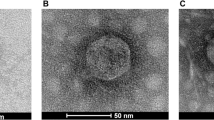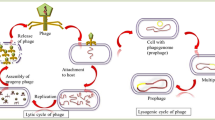Abstract
Streptococcus thermophilus phages present hazards for yogurt processing. In order to avoid adverse effects, different component yogurt starters were designed. For 2-component yogurt starters consisting of an S. thermophilus sensitive and a Lactobacillus delbrueckii ssp. bulgaricus strain, phage infection was destructive. Phages resulted in increased fermentation time, unbalanced cocci to rod ratios, decreased viscosity values, and varied sensory properties. For 3-component yogurt starters consisting of S. thermophilus sensitive, S. thermophilus insensitive, and L. bulgaricus strains, phage invasion did not result in the undesirable effects of slow acidification, decreased viscosity values, and unbalanced cocci to rod ratios. The 3-component yogurt starter stabilized fermentation and improved the practical fermentation performance in the presence of phages. Combinations of different S. thermophilus strains in the design and use of yogurt starters should be considered.
Similar content being viewed by others
References
Sieuwerts S, de Bok FAM, Hugenholtz J, van Hylckama Vlieg JET. Unraveling microbial interactions in food fermentations: From classical to genomics approaches. Appl. Environ. Microb. 74: 4997–5007 (2008)
Robitaille G, Tremblay A, Moineau S, St-Gelais D, Vadeboncoeur C, Britten M. Fat-free yogurt made using a galactose-positive expolysaccharide-producing recombinant strain of Streptococcus thermophilus. J. Dairy Sci. 92: 477–482 (2009)
Soomro AH, Masud T. Selection of yogurt starter culture from indigenous isolates of Streptococcus thermophilus and Lactobacillus delbrueckii subsp. bulgaricus on the basis of technological properties. Ann. Microbiol. 58: 67–71 (2008)
Skriver A, Stenby E, Folkenberg D, Runge M, Jensen NB. Tools in the development of future starter cultures for fermented milk. pp. 55–61. In: Proceedings of the IDF Seminar on Aroma and Texture of Fermented Milk. Kolding, Denmark. International Dairy Federation, Brussels, Belgium (2003)
Urshev ZL, Pashova-Baltova KN, Dimitrov ZP. Tracing Streptococcus thermophilus strains in three-component yogurt starters. World J. Microb. Biot. 22: 1223–1228 (2006)
Mills S, Griffin C, O’Sullivan O, Coffey A, McAuliffe OE, Meijer WC, Serrano LM, Ross RP. A new phage on the ‘Mozzarella’ block: Bacteriophage 5093 shares a low level of homology with other Streptococcus thermophilus phages. Int. Dairy J. 21: 963–969 (2011)
Quiberoni A, Moineau S, Rousseau GM, Reinheimer J, Ackermann H-W. Streptococcus thermophilus bacteriophages. Int. Dairy J. 20: 657–664 (2010)
Binetti AG, Bailo NB, Reinheimer JA. Spontaneous phage-resistant mutants of Streptococcus thermophilus: Isolation and technological characteristics. Int. Dairy J. 17: 343–349 (2007)
Garneau JE, Dupuis MÈ, Villion M, Romero DA, Barrangou R, Boyaval P, Fremaux C, Horvath P, Magadán AH, Moineau S. The CRISPR/Cas bacterial immune system cleaves bacteriophage and plasmid DNA. Nature 468: 67–71 (2010)
Viscardia M, Capparellib R, Iannelli D. Rapid selection of phage-resistant mutants in Streptococcus thermophilus by immunoselection and cell sorting. Int. J. Food Microbiol. 89: 223–231 (2003)
Mills S, Griffin C, Coffey A, Meijer WC, Hafkamp B, Ross RP. CRISPR analysis of bacteriophage-insensitive mutants (BIMs) of industrial Streptococcus thermophilus-implications for starter design. J. Appl. Microbiol. 108: 945–955 (2010)
Ma C, Wu Z, Chen Z, Du Z, Sun K, Ma A. Differentiation of Streptococcus thermophilus strains in commercial Direct Vat Set yogurt starter. Food Sci. Biotechnol. 22: 987–991 (2013)
Ma C, Pan N, Chen Z, Liu Z, Gong G, Ma A. Geographical diversity of Streptococcus thermophilus phages in Chinese yoghurt plants. Int. Dairy J. 35: 32–37 (2014)
Quiberoni A, Tremblay D, Ackermann HW, Moineau S, Reinheimer JA. Diversity of Streptococcus thermophilus phages in a large-production cheese factory in Argentina. J. Dairy Sci. 89: 3791–3799 (2006)
Ayhan K, Durlu-Özkaya F, Tunail N. Commercially important characteristics of Turkish origin domestic strains of Streptococcus thermophilus and Lactobacillus delbrueckii ssp. bulgaricus. Int. J. Dairy Technol. 58: 150–157 (2005)
Condurso C, Verzera A, Romeo V, Ziino M, Conte F. Solid-phase microextraction and gas chromatography mass spectrometry analysis of dairy product volatiles for the determination of shelf-life. Int. Dairy J. 18: 819–825 (2008)
Lucey JA. Cultured dairy products: An overview of their gelation and texture properties. Int. J. Dairy Technol. 57: 77–84 (2004)
Najgebauer-Lejko D, Sady M, Grega T, Walczycka M. The impact of tea supplementation on microflora, pH, and antioxidant capacity of yoghurt. Int. Dairy J. 21: 568–574 (2011)
Hui YH. Dairy Science and Technology Handbook. 1st ed. VCH Publishers, New York, NY, USA. pp. 1–56 (1993)
Escobar D, Clark S, Ganesan V, Repiso L, Waller J, Harte F. High-pressure homogenization of raw and pasteurized milk modifies the yield, composition, and texture of queso fresco cheese. J. Dairy Sci. 94: 1201–1210 (2011)
Ayala-Hernandez I, Goff HD, Corredig M. Interaction between milk proteins and exopolysaccharides produced by Lactococcus lactis observed by scanning electron microscopy. J. Dairy Sci. 91: 2583–2590 (2008)
Iyer R, Tomar SK, Uma Maheswari T, Singh R. Streptococcus thermophilus strains: Multifunctional lactic acid bacteria. Int. Dairy J. 20: 133–141 (2010)
Hols P, Hancy F, Fontaine L, Grossiord B, Prozzi D, Leblond-Bourget N, Decaris B, Bolotin A, Delorme C, Dusko Ehrlich S, Guédon E, Monnet V, Renault P, Kleerebezem M. New insights in the molecular biology and physiology of Streptococcus thermophilus revealed by comparative genomics. FEMS Microbiol. Rev. 29: 435–463 (2005)
Auad L, de Ruiz Holgado AAP, Forsman P, Alatossava T, Raya RR. Isolation and characterization of a new Lactobacillus delbrueckii ssp. bulgaricus temperate bacteriophage. J. Dairy Sci. 80: 2706–2712 (1997)
Binetti AG, Suárez VB, Tailliez P, Reinheimer JA. Characterization of spontaneous phage-resistant variants of Streptococcus thermophilus by randomly amplified polymorphic DNA analysis and identification of phage-resistance mechanisms. Int. Dairy J. 17: 1115–1122 (2007)
Labrie SJ, Samson JE, Moineau S. Bacteriophage resistance mechanisms. Nat. Rev. Microbiol. 8: 317–327 (2010)
Bondy-Denomy J, Pawluk A, Maxwell KL, Davidson AR. Bacteriophage genes that inactivate the CRISPR/Cas bacterial immune system. Nature 493: 429–432 (2013)
Marrec CL, van Sinderen D, Walsh L, Stanley E, Vlegels E, Moineau S, Heinze P, Fitzgerald G, Fayard B. Two groups of bacteriophages infecting Streptococcus thermophilus can be distinguished on the basis of mode of packaging and genetic determinants for major structural proteins. Appl. Environ. Microb. 63: 3246–3253 (1997)
Lévesque C, Duplessis M, Labonté J, Labrie S, Fremaux C, Tremblay D, Moineau S. Genomic organization and molecular analysis of virulent bacteriophage 2972 infecting an exopolysaccharide-producing Streptococcus thermophilus strain. Appl. Environ. Microb. 71: 4057–4068 (2005)
Author information
Authors and Affiliations
Corresponding author
Rights and permissions
About this article
Cite this article
Ma, C., Chen, Z., Gong, G. et al. Starter culture design to overcome phage infection during yogurt fermentation. Food Sci Biotechnol 24, 521–527 (2015). https://doi.org/10.1007/s10068-015-0068-1
Received:
Revised:
Accepted:
Published:
Issue Date:
DOI: https://doi.org/10.1007/s10068-015-0068-1




